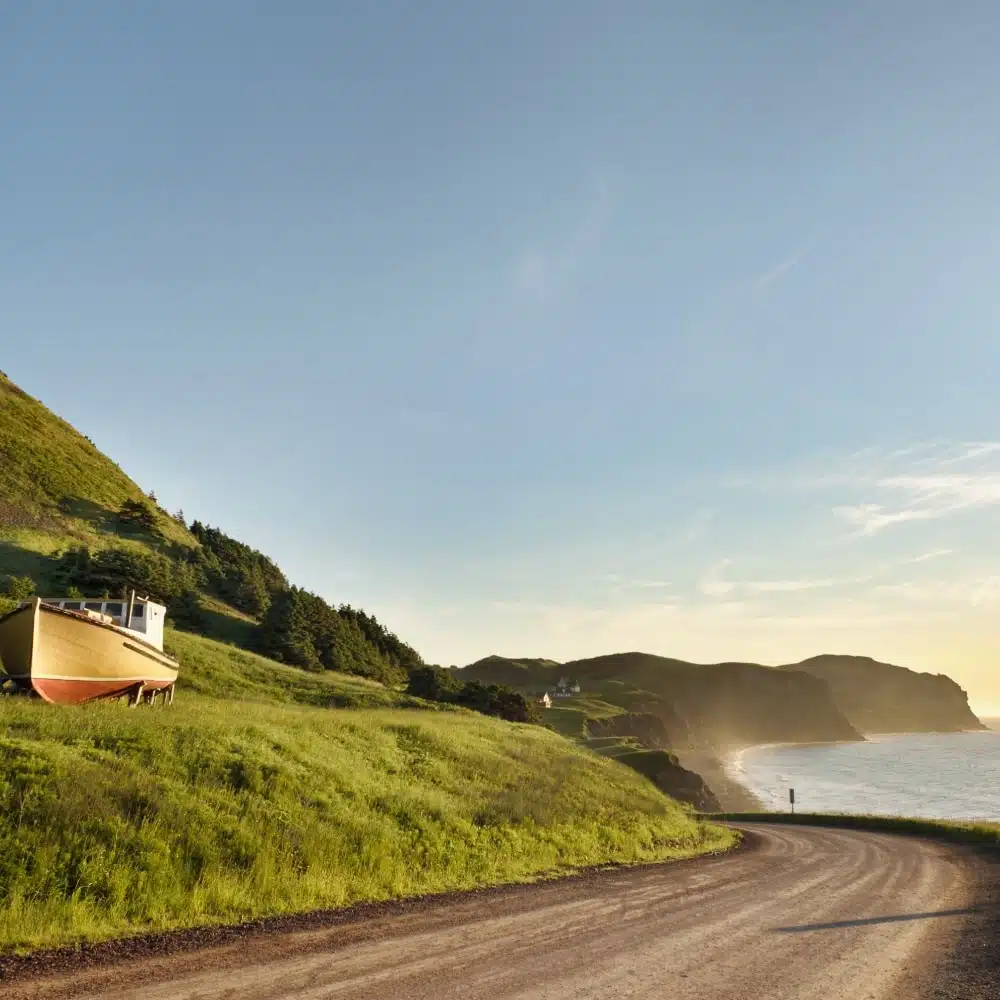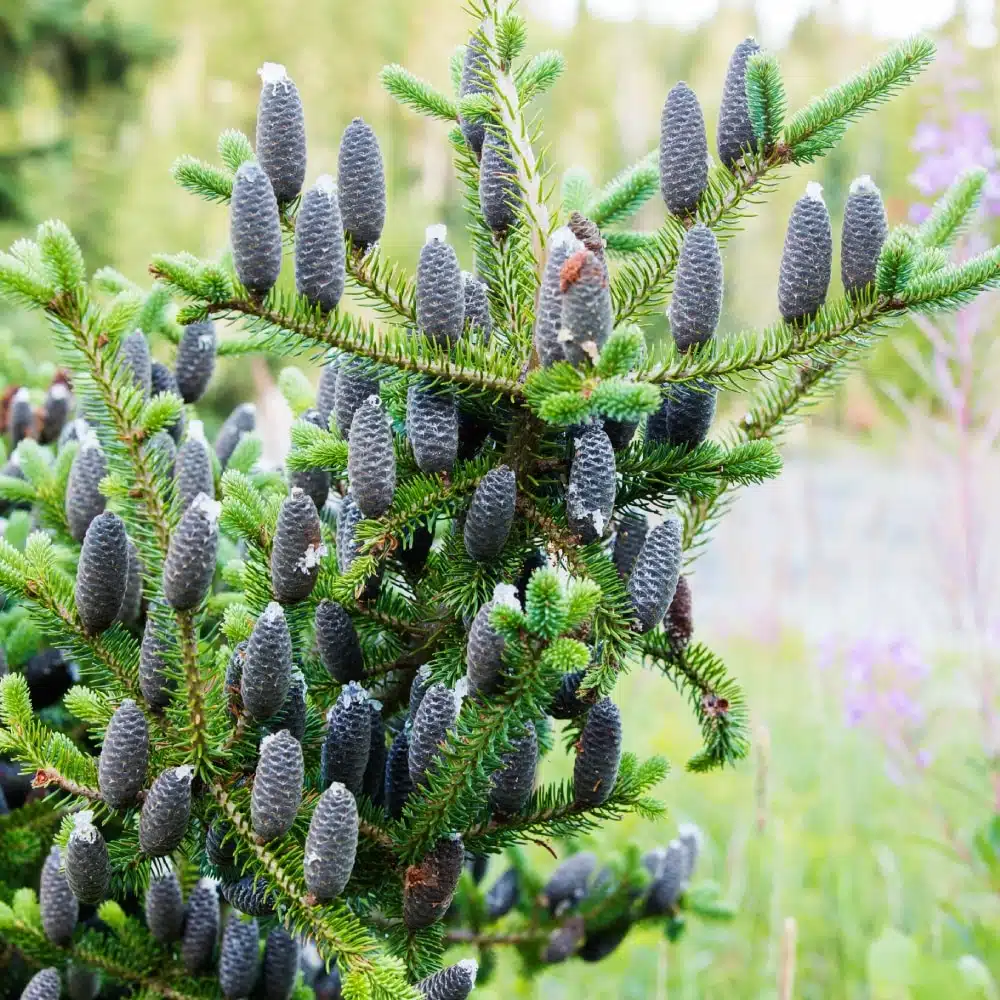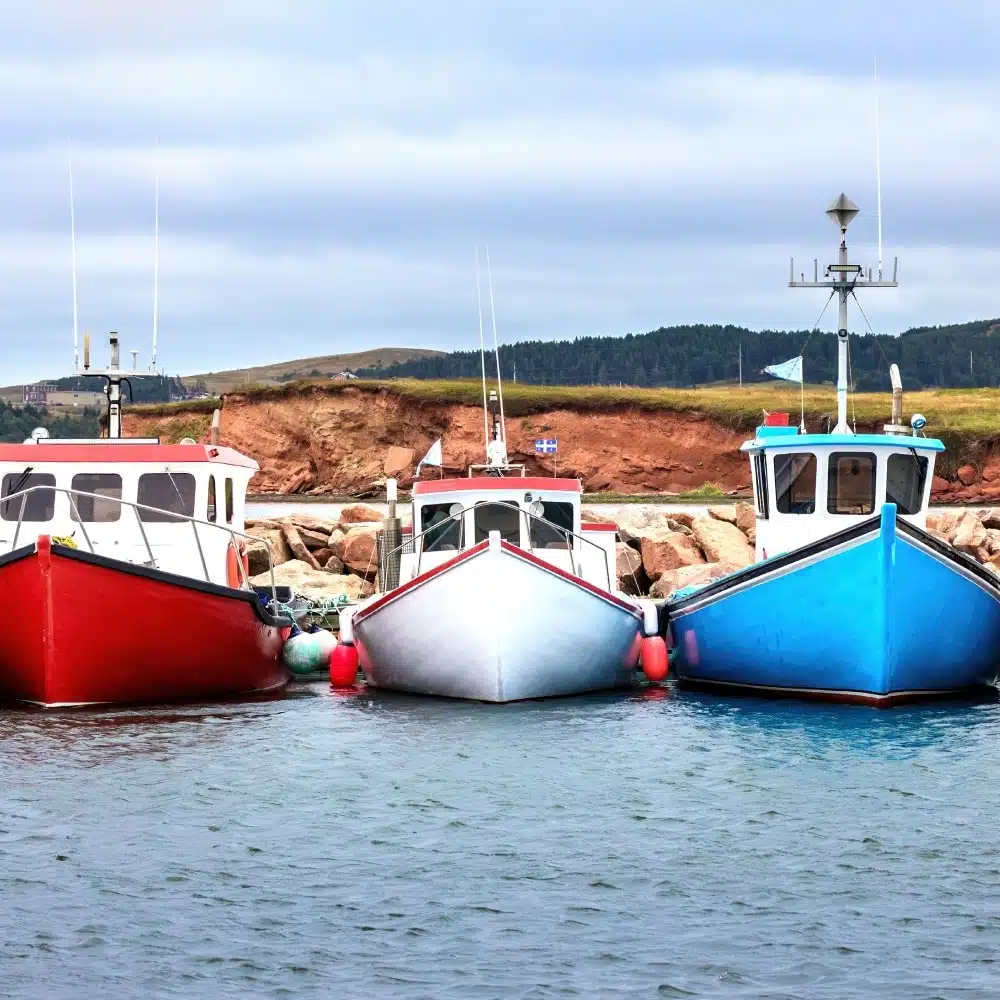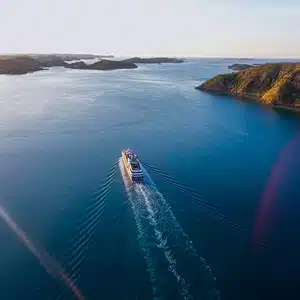An adventure in one of nature’s great wildernesses
The Magdalen Islands archipelago stretches out through the heart of the Gulf of St. Lawrence off Canada’s Atlantic coast, in the province of Quebec. It features a dozen islands, only seven of which are inhabited and six connected to each other by bridges and narrow strips of sand. “In the Islands, we don’t necessarily know the time, but we do have time!” Remember this local saying during your visit to the Magdalen Islands, where red sandstone cliffs are dotted with lighthouses and white sandy beaches stretch out as far as the eye can see, in a land characterised by green hills, forests and lagoons. Its rare ecosystem offers the perfect place for nature to thrive.
Pedal from island to island
Pedal along the Green Road with the sea as your only tireless companion. Cycle all the way around Grindstone Island, your gateway to the archipelago. You may be wondering where this name comes from! It is a legacy of days gone by, when the sandstone hill overlooking its eponymous village was reportedly used for extracting grindstones for flour mills. Heading south, a panoramic road winds through the colourful houses on Havre Aubert Island. House Harbour Island, to the north of Grindstone Island, is often seen by travellers as one of the most beautiful ‘Magdalens’. Its charming rural landscapes and treeless expanses slope gently down to the sea and are dotted with pretty traditional houses.

Access the inaccessible by kayak
How about getting away from the coastline aboard a sea kayak? Around Grindstone Island and starting from Gros-Cap Park, a network of tunnels and caves flanked by majestic red sandstone cliffs are there for you to explore. This place, where land and ocean meet, is full of surprises. The area around Havre Aubert Island is also home to two of the archipelago’s most iconic sites: the historic La Grave (a thin strip of land jutting out into the sea, where people first settled) and the naturally beautiful Butte des Demoiselles. It is said that the fishermen’s wives used to climb up to the latter’s peak to wait for their husbands to return from sea.

Forest walks
Explore the archipelago’s largest forest on Havre Aubert Island and spot its remarkable wildlife and plants as you stroll along the little woodland tracks. With a bit of luck, you might cross paths with a snowshoe hare, a species that was once in danger but has been reintroduced to the island over the past 20 years. A long wooden walkway will take you over streams and marshes, through an amazing habitat that shelters an entire ecosystem lined with bulrushes, a herbaceous perennial that thrives in marshlands and wetlands.

Learn about life as a lobster fisherman
Both a tradition and a sight to behold, lobster fishing is prevalent throughout the Magdalen Islands. As the Islands’ main source of income, it is a symbol of local pride and goodwill. It sets the pace of life on the Islands and could well set the pace for you during your stay, as you walk the quays and ports and chat with fishermen who are always keen to share their passion with visitors. Some of them might even take you on a sea fishing trip!

Climb to the top of the archipelago
To reach the only inhabited island on the archipelago that is not connected to the others, you have to take the ferry across the sea. You will be rewarded by an unspoilt natural landscape of green hills dotted with a few colourful houses, a small Anglican church and a lighthouse. Big Hill dominates from its 174-metre peak and, as the highest point on the archipelago, offers breathtaking 360-degree views. You will leave Entry Island captivated by its timeless landscape, which is ideal for hiking and reconnecting with your inner self as you leave everything else behind…
Don’t forget the uninhabited islets…
- Brion Island, north of Grosse-Île, is a precious ecological reserve and a haven for fauna and flora that is unique to Quebec.
- Pig Island gets its name from the days when islanders used to farm their pigs there. It is now home to terns, gulls and various herons.
- Bird Rock is a refuge for various seabird colonies.
- Dead Man’s Island is a geological curiosity with a black basalt ‘head’, a lizard-green ‘body’ and a red ‘tail’!
Photos credits : © iStock

PONANT takes you there
Sail to unexpected shores



